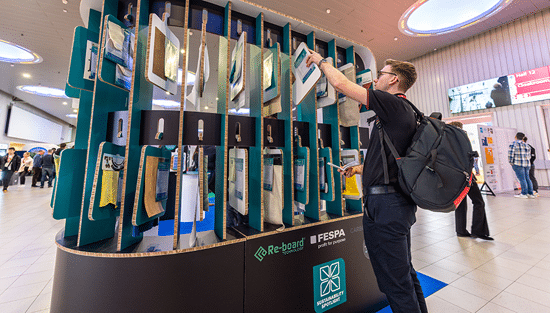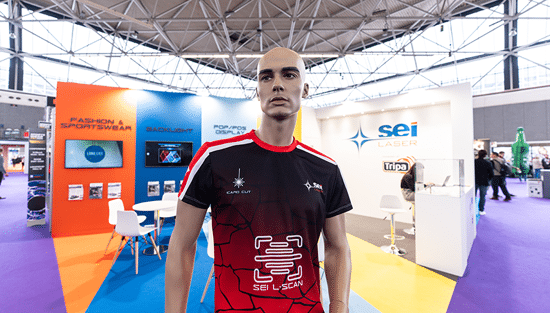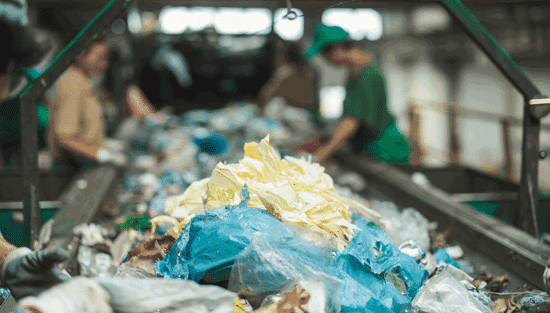Global Expo 2019: chase the markets, not the technology

Club FESPA caught up with Ken Leid of FESPA South Africa, Daniel Sunderland of FESPA Mexico and Pablo Serrano Cobos of FESPA España at the FESPA Global Expo in Munich last month to discuss new directions for the print industry.
What is the key challenge for the industry at the moment? What needs to be addressed?
-(1).png?lang=en-GB)
Ken Leid: Other than the economic issues the industry faces, the main issue is that the industry is hidden in plain sight. Young people don’t leave school thinking “I’m going to become a printer.” They don’t know how vibrant and exciting our industry is. It’s something we’re having to work on in South Africa, and I’m sure everyone around the world is experiencing the same problem.
.png?lang=en-GB)
Pablo Serrano Cobos: The industry isn’t ‘sexy’, and the demand is focused more on visual communication than printing. The reality is that the customer still demands a high-quality print. How can we communicate the industry better? This is the question we need to ask.

Daniel Sunderland: Technology is changing very fast. A lot of people will believe that digital is better than printing, but printing has a better memory than digital. A good campaign has both, but not everyone understands this. We need to show them how.
Ken Leid: From a marketing perspective, we need more of a media mix.These economies of scale are old ways of thinking. If you don’t adapt as a business owner – and embrace it – you’ll be lost.
Daniel: Some people say: “We just want digital, something that looks modern.” There’s that, and there’s personalisation. We used to have huge runs. Someone used to say I want 10,000 copies of this poster. But now they’re saying I only want 3,000, and of those I want 500 to be different and personalised. The new digital machinery makes this possible. Less runs should cost more but it doesn’t work like that now.
Ken Leid: These economies of scale are old ways of thinking. If you don’t adapt as a business owner – and embrace it – you’ll be lost.
Daniel: Printing used to be very difficult to do, you had to be skilled. The new machines mean it’s easier just to hit a button and print it. So we need to work out what our niche is, to differentiate ourselves in the market. It’s about defining the market and adapting your processes or incorporating the right technology.
Does technology have a part to play in this? A lot of printers are small businesses; do you think they’re intimidated by the investment in technology?
Daniel: It’s more just the skills gaps.
Ken Leid: The people who come to these shows look at the wonderful print technology, but they chase the technology instead of chasing markets. So we have to find the right market segment, find what our customers want and then find the right technology. It’s a way of thinking that your traditional printer doesn’t think about. They know the technology they grow up with. But markets change. Look at my old friends in South Africa, running label printing companies. The wine producers want to move to label application lines; they want roll labels instead of flat sheets. But these companies specialise in flat sheets, and they’re out of business now. Some of them move and adapt, so you get personalised wine labels, and you’re serving the demand. It’s about defining the market and adapting your processes or incorporating the right technology. Some printers stop being printers and become intermediaries, or even sales representatives because you have these new huge machines that can create an amazing amount of product
I suppose the importance of having a global expo is the sharing of ideas, discussing how different businesses have adapted to changes in market demand.
Daniel: Absolutely – you need to be aware of what’s new. If you have an expo in Mexico, and one in South Africa, you have to keep travelling around the world to stay up to date.
Ken Leid: It’s also about the exchange rate. The weakness of our currency means it’s very expensive to buy new equipment and adopt new technology. Some of the big players do, so what you find now is an enormous amount of consolidation of businesses. You’ll find a lot of the smaller businesses joining forces, or the big companies taking them over and getting the economies of scale through that. With this new buying power they can buy the new technologies they need, even internationally.
Daniel: Some printers stop being printers and become intermediaries, or even sales representatives, because you have these new huge machines that can create an amazing amount of product. So you can have one machine serving six or seven companies.
Ken Leid: It’s funny, we provide a whole range of services to our members, and one of them is commercial dispute resolution process – so you do mediation when a customer and a printer argue over who is paying for what. So they approach Printing SA and ask for mediation help. Companies are sharing technology or printers, but can’t resolve issues with payment and responsibility.
Let’s say print marketing companies used to have their own printing company, but now they’ve all agreed to become shareholders. So you have people selling at the front end of one business that actually has three names, but is all printing in the same place.
The incorporation of IT, software/hardware and digital transfer images is the future of printing. Companies that aren’t embracing that will be left behind.
Is that the future for small printers?
Ken Leid: I think the relationship that the small printer has with his client is what he wants to preserve, and in the same way it’s who the client wants to deal with. The fact they are taken through a factory that doesn’t really belong to them doesn’t matter. They are essentially broking. That’s what’s happening.
So what do you think the future holds?
Ken Leid: I’ll quote Benny Lander: “Everything that can go digital will go digital.” If you look at a company I look after in Cape Town, they have a press and they will call it a heat set press. It’s not – it’s a digital press – but it looks like a foundational offset press, and the image transfer is digital. It’s amazing; I walked around and said: “Where’s the collating line on this binding line?” But it doesn’t exist because the digital printer produces the book block. The technology is going to look like a conventional litho offset press because feeding mechanisms and the transport mechanisms all look like those robust old printers. More and more you see that on the binding side too – you’re able to run different formats one after the other on the same line. The incorporation of IT, software/hardware and digital transfer images is the future of printing. Companies that aren’t embracing that will be left behind.
Become a FESPA member to continue reading
To read more and access exclusive content on the Club FESPA portal, please contact your Local Association. If you are not a current member, please enquire here. If there is no FESPA Association in your country, you can join FESPA Direct. Once you become a FESPA member, you can gain access to the Club FESPA Portal.
Topics
Recent news

New sustainable materials at Sustainability Spotlight
Sustainability Spotlight returned by popular demand to FESPA Global Print Expo last month in an exhibit curated by The Good Factory.

Sportswear Pro: building ‘Brand Me’
After the success of the inaugural Sportswear Pro last month, we spoke with panellist and personalisation expert James Lawrence-Jones about the most exciting revelations at the event.

